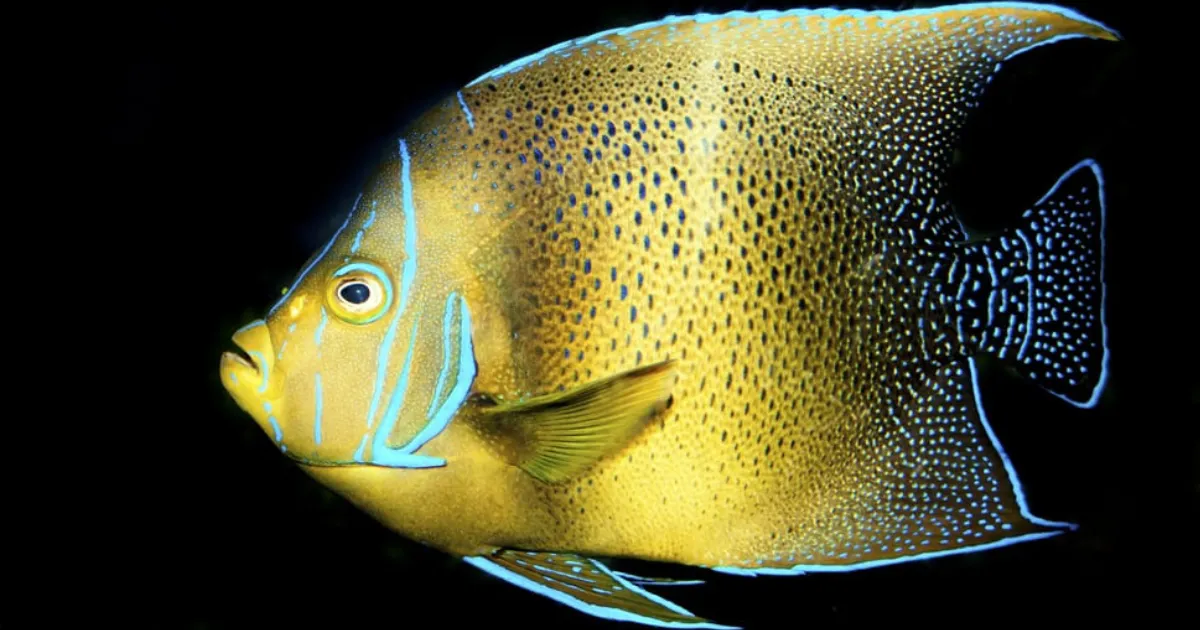With their regal beauty and imposing yet graceful presence, the koran angelfish (Pomacanthus semicirculatus) is one of the most coveted marine species for home saltwater aquariums. When properly cared for, these showstopping fish can be the crown jewel of any tank. This comprehensive guide covers everything beginners need to know about koran angelfish care and keeping them healthy and thriving in captivity.
Introduction to the Stunning Pomacanthus semicirculatus.
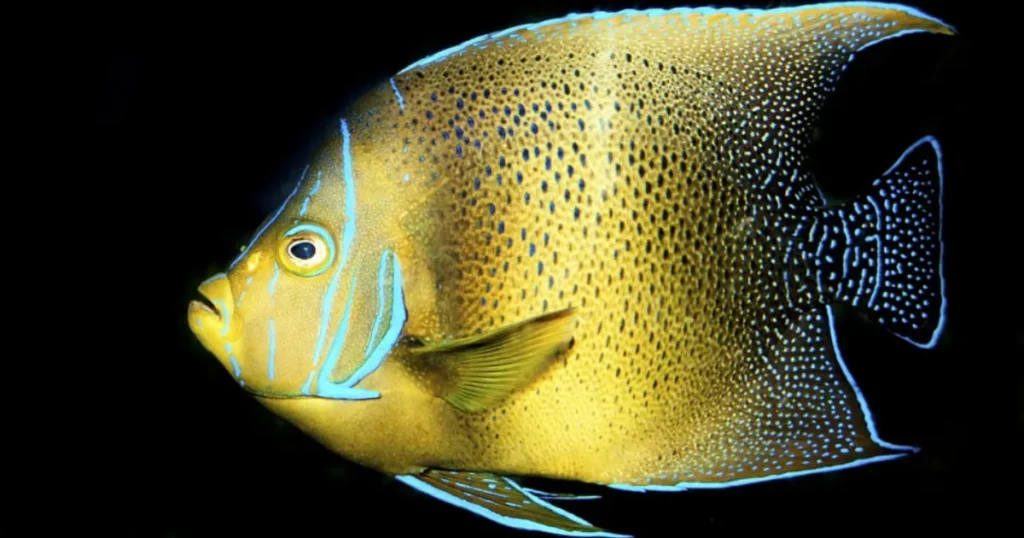
Hailing from the reefs of the Red Sea and parts of the Indian Ocean, the koran angelfish dazzles with its vibrant yellow body accented with vertical blue and black stripes. Its face features striking black and white bands through the eyes.
Mature adults can reach up to 16 inches long in ideal aquarium conditions. While juveniles start out quite small at 1-3 inches, their growth is continuous over their 10+ year lifespan. This means koran angelfish tank size must increase over time to accommodate their impressive full grown dimensions.
Successfully keeping koran angelfish requires catering care to their specific needs. By replicating their wild habitat, providing ample swimming room, an appropriate diet, and quick treatment of any diseases, koran angelfish can thrive for years in home aquariums.
Habitat And Distribution
The Koran Angelfish is native to the Indo-Pacific region, with its natural habitat ranging from the coasts of southern Japan and northern Australia to the Red Sea and Sri Lanka. They can be found in shallow protected areas and on coral reefs, typically at depths of 3 to 98 feet.
Fish Keeping Difficulty
The Koran Angelfish is considered to have a moderate level of care difficulty. While they have similar needs to other angelfish species, they are generally less touchy and adapt more readily to aquarium life. This makes them a great choice for both beginner and intermediate aquarists. However, their large size and specific tank requirements should be taken into consideration.
Guide To Keeping Saltwater Angelfish…
Lifespan
With proper care, the Koran Angelfish can live for over 21 years in captivity. It is essential to provide them with a nutrient-rich diet and a stress-free environment to ensure a long and healthy lifespan.
Koran Angelfish Size and Development.
Understanding the marked differences between juvenile and adult koran angelfish is key for proper care.
Koran angelfish juveniles exhibit faint vertical bars over a tan body and lack the vibrant yellow coloration. At 1-3 inches long, they can easily be mistaken for a less flashy species.
By the 6-12 month mark, young koran angelfish transition towards adult coloration. At 3-5 inches long, the yellow hues intensify and dark facial bands emerge. By sexual maturity around 12 months old, they reach 6-8 inches long and display full adult patterning and fins.
Under optimal aquarium conditions with a varied diet, koran angelfish can achieve lengths over 16 inches as mature adults. Stunting is common when juveniles are undersized tanks, so allow plenty of room for growth.
Koran Angelfish Care.
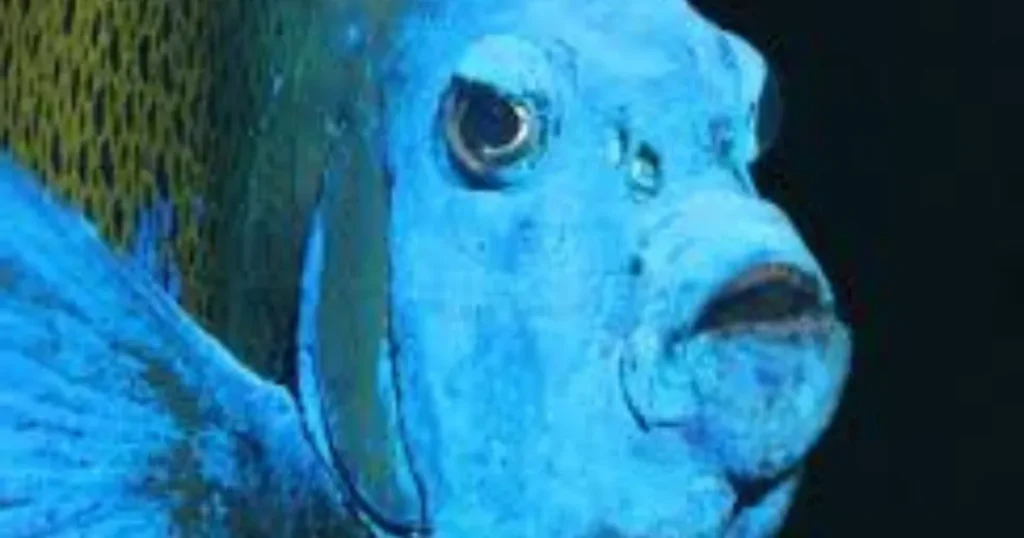
Koran Angelfish Tank Size.
When it comes to “Koran Angelfish Care” topic, Due to their large size, the Koran Angelfish requires a spacious aquarium. A minimum tank size of 135 gallons (511 liters) is recommended for a single specimen. However, to accommodate their full adult size and provide ample swimming space, a tank size of 225 to 275 gallons (852 to 1041 liters) is ideal. It is important to allocate enough room for proper growth and to prevent stress-related illnesses.
Aquarium Setup.
Aquarium setup is another key point when it comes to koran angelfish care needs.Creating a suitable environment for the Koran Angelfish involves careful consideration of tank decor and water conditions. Here are some key elements to keep in mind when setting up your aquarium:
- Live Rock and Hiding Places: Provide plenty of live rock in the tank, which will serve as a grazing area for the angelfish. Create cave-like formations and overhangs to offer hiding places for the fish when they feel threatened or tired. This will help reduce stress levels and promote overall well-being.
- Water Parameters: Maintain optimal water conditions to mimic the natural habitat of the Koran Angelfish. The recommended parameters include a pH level of 8.1-8.4, a temperature range of 72-82°F (22.2-27.8°C), and a specific gravity of 1.020-1.025. Regular water testing is crucial to ensure these parameters remain stable.
- Filtration System: Install a reliable filtration system to maintain water quality and remove any impurities. Regular cleaning and maintenance of the filtration system are essential for the well-being of the angelfish.
- Tank Mates: When choosing tank mates for your Koran Angelfish, it is important to consider their compatibility. Avoid adding other large angelfish or aggressive species that may trigger territorial disputes. Instead, opt for peaceful species such as certain clownfish, wrasses, gobies, and tangs.
Read More About Saltwater Angelfish Tank Setup…
Feeding Requirements
Koran Angelfish are omnivores, with a diet that leans more towards plant-based foods. In their natural habitat, they feed on algae, tunicates, and other encrusting organisms. To replicate their natural diet in captivity, it is essential to provide them with a varied and nutritious diet.
- Plant-based Foods: Offer foods such as algae, seaweed, spirulina, and Nori to fulfill their plant-based dietary needs. These can be supplemented with commercially available angelfish-specific food that contains marine sponge, as this is an important component of their diet.
- Meaty Proteins: Provide meaty proteins like shrimp, clams, shellfish, and squid to ensure a balanced diet. However, be cautious when feeding them in a reef tank, as they have a tendency to eat sponges and pick at corals.
- Feeding Frequency: Feed your Koran Angelfish 2-3 times a day, offering small portions each time. This will prevent overfeeding and maintain good water quality in the tank.
Common Diseases
Like most marine fish, the Pomacanthus semicirculatus is susceptible to common diseases and health issues. It is crucial to maintain good water quality and provide a stress-free environment to minimize the risk of illnesses. Some common diseases that may affect the Koran Angelfish include:
- Marine Ich: This disease is characterized by small white spots on the fish’s body. Early detection and prompt treatment are essential to prevent the spread of the disease.
- Marine Velvet: Marine Velvet is a parasitic disease that can quickly become fatal if left untreated. Look out for symptoms such as rapid breathing, loss of appetite, and abnormal swimming behavior.
- Intestinal parasites – Wasting away, loss of appetite. Use medicated anti-parasitic foods.
- Bacterial infections – Popeye, fin rot, ulcers. Use antibiotic medications as needed.
- Abrasions – From contact with tank decor. Keep decor smooth, reduce aggression.
- Nutritional deficiencies – Ensure varied, vitamin-rich diet.
Regular observation and monitoring of your angelfish’s behavior and appearance will help identify any signs of illness. If you notice any abnormalities, consult with a veterinarian or an experienced aquarist for proper diagnosis and treatment.
Caring for Koran Angelfish Juvenile.
Special attention must be paid to properly raise koran angelfish juveniles into healthy adults. Key tips include:
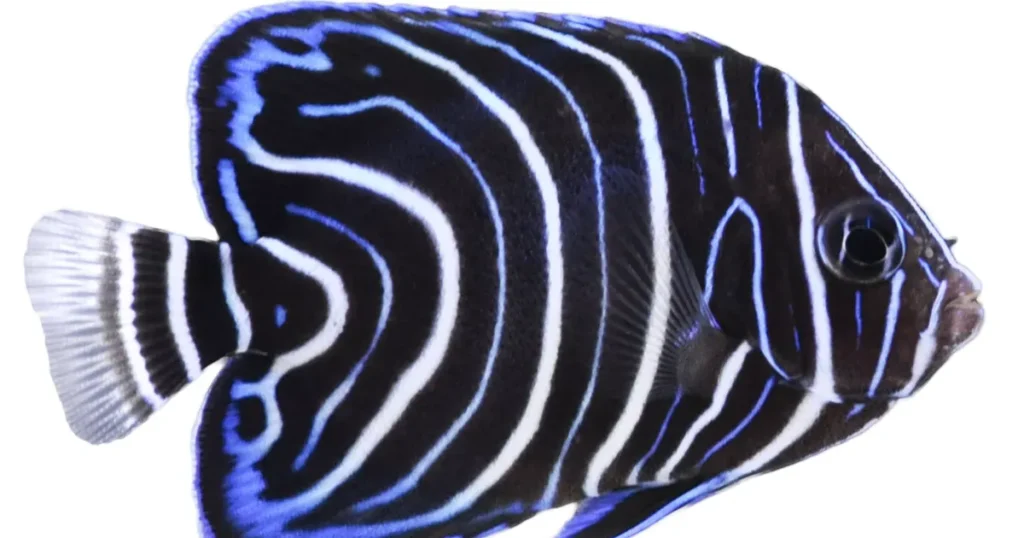
- House in pristine water conditions free of toxins
- Feed small meals 3-4x daily of vitamin-enriched foods
- Avoid aggressive tankmates that may bully or compete for food
- Use dim lighting and provide ample hides and line of sight breaks
- Increase tank size steadily as juveniles grow
- Prioritize growth with frequent water changes and optimal diet
With meticulous care, koran angelfish juvenile can reach their full size and lifespan potential. Patience is required, but the reward is a showstopping adult specimen
Tank Compatibility and Social Behaviors.
Is Koran Angelfish Reef Safe?
The question of koran angelfish reef safe status is a nuanced one. Adult koran angelfish often ignore corals when housed in very large tanks with abundant algae growth. However, they may nibble on sessile invertebrates, especially when newly introduced or undersized tanks.
Here are some tips for improving chances of reef success:
- House koran angelfish in established, mature reef tanks
- Provide ample live rock, macroalgae to graze on
- Introduce koran angelfish last after corals are secured
- Target feed koran angelfish to discourage nibbling
- Remove immediately if aggression arises
While not guaranteed reef safe, many koran angelfish coexist peacefully in reefs when their needs are fully met. Use caution and be prepared to separate if issues emerge.
Tank Compatibility
When selecting tank mates for your Koran Angelfish, it is important to consider their temperament and compatibility. While they can be territorial and aggressive towards other angelfish, there are suitable tank mates that can coexist peacefully with them:
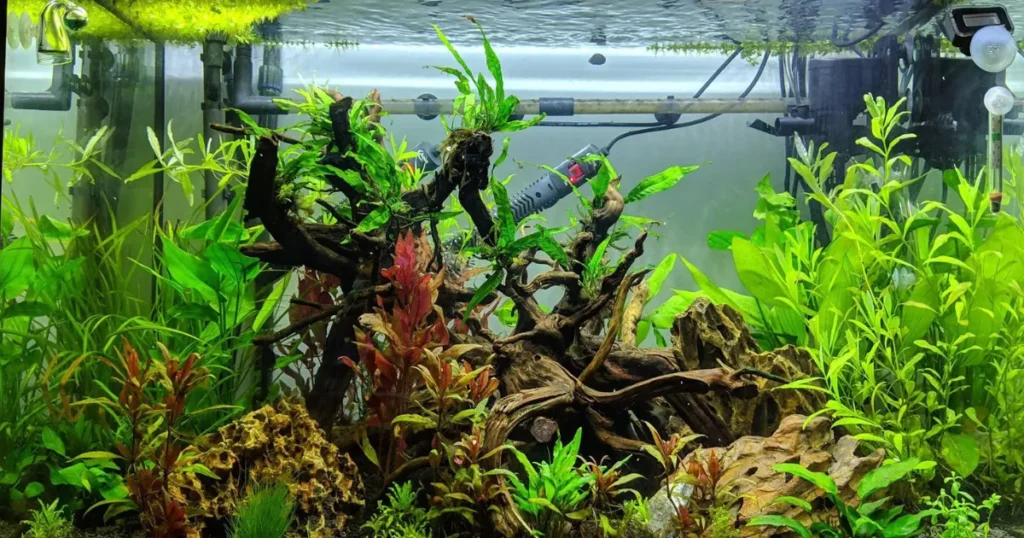
- Dwarf Angels: Certain species of dwarf angels, such as the Flame Angelfish (Centropyge loriculus) and Lemonpeel Angelfish (Centropyge flavissima), can make suitable tank mates for the Koran Angelfish. However, carefully monitor their interactions to ensure compatibility.
- Wrasses: Peaceful wrasses like the Six-Line Wrasse (Pseudocheilinus hexataenia) or the Yellow Coris Wrasse (Halichoeres chrysus) can be compatible with the Koran Angelfish.
- Clownfish: Certain species of clownfish, such as the Ocellaris Clownfish (Amphiprion ocellaris) or the Percula Clownfish (Amphiprion percula), can coexist peacefully with the Koran Angelfish.
- Other medium sized angelfish like the flame angelfish
- Dragonets, scooter blennies, assessors, and other small bottom dwellers
- Peaceful wrasses like mystery wrasses or pygmy wrasses
- Large peaceful gobies like blenny gobies or randall’s shrimpgobies
- Tangs like sailfin tangs, yellow tangs, or Achilles tangs
- Some hardy largish LPS and SPS corals, clams, zoanthids
Avoid housing with lionfish, triggers, puffers, aggressive wrasses, and other territorial angelfish. Introduce all new tankmates slowly.
Social Behaviors
The Koran Angelfish is a semi-aggressive fish, particularly towards other angelfish and similarly shaped fish. While they may exhibit territorial behavior, they are generally active swimmers and will explore all parts of the water column in search of food. Regular feedings can help mitigate their aggressive tendencies.
Breeding and Reproduction
Breeding the Koran Angelfish in a home aquarium setting is challenging and less commonly achieved compared to other angelfish species. However, successful captive spawning has been reported in some cases. If you are interested in breeding Koran Angelfish, it is recommended to seek guidance from experienced breeders or join online communities dedicated to angelfish breeding.
Availability
Koran Angelfish are relatively common in the aquarium trade and can be found in local fish stores or online retailers that specialize in saltwater fish. However, it is important to ensure that the fish you purchase are healthy and acclimated properly.
When purchasing a Koran Angelfish, look for specimens that are around 3 to 5 inches in size. Avoid purchasing very small juveniles or larger adults, as they may have difficulty adapting to a new tank environment.
Also Read Types Of Saltwater Angelfish….
Conclusion
The Koran Angelfish is undoubtedly a captivating addition to any saltwater aquarium. With its stunning colors, unique patterns, and relatively moderate care requirements, it appeals to both beginner and experienced aquarists alike. By providing a suitable tank setup, a balanced diet, and compatible tank mates, you can ensure the health and longevity of your Koran Angelfish. Remember to monitor their behavior and water conditions regularly and seek professional advice if you notice any signs of illness. With proper care and attention, your Koran Angelfish will thrive and become the centerpiece of your marine aquarium.
FAQs.
How big do Pomacanthus semicirculatus get?
In the wild koran angelfish can reach over 24 inches, but in home aquariums they generally max out around 16 inches as adults when properly cared for.
What size tank does a koran angelfish need?
A minimum of a 135 gallon tank for one koran angelfish. Add 70-80 more gallons for each additional koran angelfish in the tank.
Are koran angelfish reef safe?
Koran angelfish are not guaranteed reef safe, but they can often successfully be kept in mature reef tanks when their needs are fully met. Some risk of coral nibbling still exists.
What should I feed my koran angelfish?
Koran angelfish are primarily herbivores. Offer a variety of marine algae, seaweed, spirulina, high-quality angelfish preparations, along with occasional meaty items.
How often should I feed koran angelfish?
Juveniles need small, frequent meals 3-4 times per day. Adults can be fed 1-2 times per day.
Why is my koran angelfish not eating?
Check water parameters first. Stressed fish often refuse food. Try tempting with frozen mysis shrimp or live brine shrimp.
How can you tell a koran angelfish juvenile vs adult?
Juveniles have drab coloration without distinct bands on the face. Adults display vibrant yellow bodies with bold black and white facial bands.
What is the typical lifespan of a koran angelfish?
In a well-maintained home aquarium, koran angelfish generally live upto 21 years. Meeting their care needs maximizes longevity.

